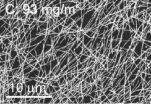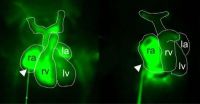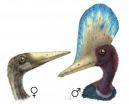(Press-News.org) BOSTON – A patient's relationship with his or her doctor has long been considered an important component of healing. Now, in a novel investigation in which physicians underwent brain scans while they believed they were actually treating patients, researchers have provided the first scientific evidence indicating that doctors truly can feel their patients' pain – and can also experience their relief following treatment.
Led by researchers at Massachusetts General Hospital (MGH) and the Program in Placebo Studies and Therapeutic Encounter (PiPS) at Beth Israel Deaconess Medical Center/Harvard Medical School, the new findings, which appear on-line today in Molecular Psychiatry, help to illuminate one of the more intangible aspects of health care – the doctor/patient relationship.
"Our findings showed that the same brain regions that have previously been shown to be activated when patients receive placebo therapies are similarly activated in the brains of doctors when they administer what they think are effective treatments," explains first author Karin Jensen, PhD, an investigator in the Department of Psychiatry and Martinos Center for Biomedical Imaging at MGH and member of the PiPS. Notably, she adds, the findings also showed that the physicians who reported greater ability to take things from the patients' perspective, that is, to empathize with patients' feelings, experienced higher satisfaction during patients' treatments, as reflected in the brain scans.
"By demonstrating that caring for patients involves a complex set of brain events, including deep understanding of the patient's facial and body expressions, possibly in combination with the physician's own expectations of relief and feelings of reward, we have been able to elucidate the neurobiology underlying caregiving," adds senior author Ted Kaptchuk, director of the PiPS and Associate Professor of Medicine at Harvard Medical School. "Our findings provide early evidence of the importance of interacting brain networks between patients and caregivers and acknowledge the doctor/patient relationship as a valued component of health care, alongside medications and procedures."
Previous investigations have demonstrated that a brain region associated with pain relief (right ventrolateral prefrontal cortex, VLPFC) and a region associated with reward (rostral anterior cingulate cortex, rACC) are activated when patients experience the placebo effect, which occurs when patients show improvement from treatments that contain no active ingredients. The placebo effect accounts for significant portions of clinical outcomes in many illnesses -- including pain, depression and anxiety.
Although behavioral research has suggested that physicians' expectations influence patients' clinical outcomes and help determine patients' placebo responses, until now little effort has been directed to understanding the biology underlying the physician component of the clinical relationship. Jensen and her colleagues hypothesized that the same brain regions that are activated during patients' placebo responses – the VLPFC and rACC -- would similarly be activated in the brains of physicians as they treated patients. They also hypothesized that a physician's perspective-taking skills would influence the outcomes.
To test these hypotheses, the scientists developed a unique equipment arrangement that would enable them to conduct functional magnetic resonance imaging (fMRI) of the physicians' brains while the doctors had face-to-face interactions with patients, including observing patients as they underwent pain treatments.
The experiment included 18 physicians (all of whom had received their medical degree within the last 10 years and represented nine separate medical specialties). Two 25-year-old females played the role of "patients" and followed a rehearsed script. The experiment called for the participating physicians to administer pain relief with what they thought was a pain-relieving electronic device, but which was actually a non-active "sham" device.
To ensure that the physicians believed that the sham device really worked, the investigators first administered a dose of "heat pain" to the physicians' forearms to gauge pain threshold and then "treated" them with the fake machine. During the treatments, the investigators reduced the heat stimulation, to demonstrate to the participants that the therapy worked. The physicians underwent fMRI scans while they experienced the painful heat stimulation so that investigators could see exactly which brain regions were activated during first-person perception of pain.
In the second portion of the experiment,each physician was introduced to a patient and asked to perform a standardized clinical examination, which was conducted in a typical exam room for approximately 20 minutes. (The clinical exam was performed in order to establish a realistic rapport between the physician and patient before fMRI scanning took place, and was comparable to a standard U.S. doctor's appointment.) At this point the physician also answered a questionnaire, the Interpersonal Reactivity Index, used to measure the participant's self-reported perspective-taking skills.
During the third step, says Jensen, the physician and patient were led into the scanner room. "The physician went inside the scanner and was equipped with a remote control that could activate the 'analgesic device' when prompted," she explains. Mirrors inside the scanner enabled physicians to maintain eye contact with the patient, who was seated on a chair next to the scanner's bed and hooked up to both the thermal pain stimulator and the pain-relieving device.
Then, in a randomized order, physicians were instructed to either treat a patient's pain or to press a control button that provided no relief. When physicians were told not to activate pain relief, the "patient" exhibited a painful facial expression while the physicians watched. When the physicians were instructed to treat the patients' pain, they could see that the subjects' faces were neutral and relaxed, the result of pain relief. During these doctor-patient interactions, fMRI scans measured the doctors' brain activations.
Following the scanning session, the physicians were removed from the scanner and told exactly how the experiment had been performed, says Jensen. "If the physician did not agree with the deceptive component of the study, they were given the opportunity to withdraw their data. No one did this."
As predicted, the authors found that while treating patients, the physicians activated the right VLPFC region of the brain, a region previously implicated in the placebo response. Furthermore, Jensen adds, the physicians' ability to take the patients' viewpoints correlated to brain activations and subjective ratings; physicians who reported high perspective-taking skills were more likely to show activation in the rACC brain region, which is associated with reward.
"We already know that the physician-patient relationship provides solace and can even relieve many symptoms," adds Kaptchuk. "Now, for the first time, we've shown that caring for patients encompasses a unique neurobiology in physicians. Our ultimate goal is to transform the 'art of medicine' into the 'science of care,' and this research is an important first step in this process as we continue investigations to find out how patient-clinician interactions can lead to measurable clinical outcomes in patients."
###
In addition to Jensen and Kaptchuk, study coauthors include MGH and PiPS investigators Jacqueline Raicek, Alexandra Cheetham, Rosa Spaeth, Amanda Cook, Randy L. Gollub, and Jian Kong; Predrag Petrovic of the Karolinska Institute, Stockholm, Sweden; and Irving Kirsch of the PiPS.
This study was funded, in part, by the Swedish Society for Medical Research and the Swedish Council for Working Life and Social Research, Osher Center for Integrative Medicine (Karolinska Institute) and by NIH grants from the National Center on Complementary and Alternative Medicine (K24AT004095; P01 AT003883; R21AT004497; R01AT006364; R01AT005280), the National Institute on Drug Abuse (R03AT218317); and the National Center for Research Resources (M01-RR-01066 and UL1 RR025758-01; and P41RR14075).
Beth Israel Deaconess Medical Center is a patient care, teaching and research affiliate of Harvard Medical School and currently ranks third in National Institutes of Health funding among independent hospitals nationwide. BIDMC is clinically affiliated with the Joslin Diabetes Center and is a research partner of the Dana-Farber/Harvard Cancer Center. BIDMC is the official hospital of the Boston Red Sox. For more information, visit www.bidmc.org.
Massachusetts General Hospital, founded in 1811, is the original and largest teaching hospital of Harvard Medical School. The MGH conducts the largest hospital-based research program in the United States, with an annual research budget of more than $750 million and major research centers in AIDS, cardiovascular research, cancer, computational and integrative biology, cutaneous biology, human genetics, medical imaging, neurodegenerative disorders, regenerative medicine, reproductive biology, systems biology, transplantation biology and photomedicine. In July 2012, MGH moved into the number one spot on the 2012-13 U.S. News & World Report list of "America's Best Hospitals." END
Physicians' brain scans indicate doctors can feel their patients' pain -- and their relief
Novel experiment illuminates the importance of the doctor-patient relationship
2013-01-29
ELSE PRESS RELEASES FROM THIS DATE:
Preclinical study identifies 'master' proto-oncogene that regulates ovarian cancer metastasis
2013-01-29
Scientists at The University of Texas MD Anderson Cancer Center have discovered the signaling pathway whereby a master regulator of cancer cell proteins – known as Src – leads to ovarian cancer progression when exposed to stress hormones. The researchers report in the current issue of Nature Communications that beta blocker drugs mitigate this effect and reduce cancer deaths by an average of 17 percent.
Src (pronounced "sarc," short for sarcoma) is a proto-oncogene – a normal gene that can become an oncogene due to increased expression – involved in the regulation of ...
Medical societies unite on patient-centered measures for nonsurgical stroke interventions
2013-01-29
FAIRFAX, Va.—The first outcome-based guidelines for interventional treatment of acute ischemic stroke—providing recommendations for rapid treatment—will benefit individuals suffering from brain attacks, often caused by artery-blocking blood clots. Representatives from the Society of Interventional Radiology and seven other medical societies created a multispecialty and international consensus on the metrics and benchmarks for processes of care and technical and clinical outcomes for stroke patients.
In February, the guidelines will be published first in SIR's Journal ...
New options for transparent contact electrodes
2013-01-29
This press release is available in German.
Found in flat screens, solar modules, or in new organic light-emitting diode (LED) displays, transparent electrodes have become ubiquitous. Typically, they consist of metal oxides like In2O3, SnO2, ZnO and TiO2.
But since raw materials like indium are becoming more and more costly, researchers have begun to look elsewhere for alternatives. A new review article by HZB scientist Dr. Klaus Ellmer, published in the renowned scientific journal Nature Photonics, is hoping to shed light on the different advantages and disadvantages ...
Epigenetic control of cardiogenesis
2013-01-29
This press release is available in German.
Many different tissues and organs form from pluripotent stem cells during embryonic development. To date it had been known that these processes are controlled by transcription factors for specific tissues. Scientists from the Max Planck Institute for Molecular Genetics in Berlin, in collaboration with colleagues at MIT and the Broad Institute in Boston, have now been able to demonstrate that RNA molecules, which do not act as templates for protein synthesis, participate in these processes as well. The scientists knocked down ...
New insights into conquering influenza
2013-01-29
As influenza spreads through the northern hemisphere winter, Dr Linda Wakim and her colleagues in the Laboratory of Professor Jose Villadangos from the Department of Biochemistry and Molecular Biology, and the Department of Microbiology and Immunology, believe they have a new clue to why some people fight infections better than others.
The lab has been investigating the 'defensive devices' contained within the T- cells that are located on exposed body surfaces such as skin and mucosal surfaces to ward off infection. T-cells detect cells infected with viruses and kill ...
Survival of the prettiest: Sexual selection can be inferred from the fossil record
2013-01-29
Detecting sexual selection in the fossil record is not impossible, according to scientists writing in Trends in Ecology and Evolution this month, co-authored by Dr Darren Naish of the University of Southampton.
The term "sexual selection" refers to the evolutionary pressures that relate to a species' ability to repel rivals, meet mates and pass on genes. We can observe these processes happening in living animals but how do palaeontologists know that sexual selection operated in fossil ones?
Historically, palaeontologists have thought it challenging, even impossible, ...
New insights into managing our water resources
2013-01-29
Dr Tim Peterson, from the School of Engineering at the University of Melbourne has offered new theories that will lead to a deeper knowledge of how water catchments behave during wet and dry years. His research was published recently in the leading international hydrology journal "Water Resources Research" and was selected by the American Geophysical Union as a highlight of the society's 13 international journals.
Dr Peterson's work shows that some catchments have a finite resilience to wet and dry years because they have two steady states. The traditionally held view ...
Study reveals 2-fold higher incidence of non-melanoma skin cancers for HIV patients
2013-01-29
OAKLAND, Calif., January 29 — HIV-positive patients have a higher incidence of non-melanoma skin cancers, according to a Kaiser Permanente study that appears in the current online issue of the Journal of the National Cancer Institute. Specifically, basal cell and squamous cell carcinomas occur more than twice as often among HIV-positive individuals compared to those who are HIV-negative.
The study cohort of 6,560 HIV-positive and almost 37,000 HIV-negative subjects was drawn from members of Kaiser Permanente Northern California from 1996 to 2008.
Overall, HIV-positive ...
Indoor air puts Chinese women nonsmokers at risk
2013-01-29
BUFFALO, N.Y. – The hazards of breathing outdoor air in some Chinese cities have been well-documented. Now a University at Buffalo study confirms that breathing indoor air also carries significant cancer risks, especially for Chinese women.
The UB study, published online this month, in the journal Cancer Causes & Control, found that indoor air pollution that generates fine particulate matter is a key contributor to the high rates of lung cancer among Chinese women, despite the fact that few of them smoke.
The research found indoor particulate matter levels that are ...
Researchers generate a mutant mouse model useful in the treatment of neuromuscular diseases
2013-01-29
In three to six months of life, this genetic alteration in mice –similar to that occurred in human– causes a rapid degeneration in the lower limbs to death for cardiac arrest.
For the first time in the world, researchers at the Center for Biomedical Research of the University of Granada have created mice with a genetic mutation inducing a deficiency in the coenzyme Q10, a rare mitochondrial disease prevailingly affecting children. These mutant mice –which lack the Coq9 gene– will be "a valuable tool for the study and treatment of metabolic encephalopathies and neuromuscular ...
LAST 30 PRESS RELEASES:
An ‘illuminating’ design sheds light on cholesterol
Who is more likely to get long COVID?
Study showcases resilience and rapid growth of “living rocks”
Naval Research Lab diver earns Office of Naval Research 2025 Sailor of the Year
New Mayo-led study establishes practical definition for rapidly progressive dementia
Fossil fuel industry’s “climate false solutions” reinforce its power and aggravate environmental injustice
Researchers reveal bias in a widely used measure of algorithm performance
Alcohol causes cancer. A study from IOCB Prague confirms damage to DNA and shows how cells defend against it
Hidden viruses in wastewater treatment may shape public health risks, study finds
Unlock the power of nature: how biomass can transform climate mitigation
Biochar reshapes hidden soil microbes that capture carbon dioxide in farmland
Reducing saturated fat intake shows mortality benefit, but only in high-risk individuals
Manta rays create mobile ecosystems, study finds
Study: Mixed results in using lipoic acid to treat progressive multiple sclerosis
Norbert Holtkamp appointed director of Fermi National Accelerator Laboratory
New agentic AI platform accelerates advanced optics design
Biologists discover neurons use physical signals — not electricity — to stabilize communication
Researchers discover that a hormone can access the brain by hitchhiking
University of Oklahoma researcher awarded funding to pursue AI-powered material design
Exploring how the visual system recovers following injury
Support for parents with infants at pediatric check-ups leads to better reading and math skills in elementary school
Kids’ behavioral health is a growing share of family health costs
Day & night: Cancer disrupts the brain’s natural rhythm
COVID-19 vaccination significantly reduces risk to pregnant women and baby
The role of vaccination in maternal and perinatal outcomes associated with COVID-19 in pregnancy
Mayo Clinic smartwatch system helps parents shorten and defuse children's severe tantrums early
Behavioral health spending spikes to 40% of all children’s health expenditures, nearly doubling in a decade
Digital cognitive behavioral treatment for generalized anxiety disorder
Expenditures for pediatric behavioral health care over time and estimated family financial burden
Air conditioning in nursing homes and mortality during extreme heat
[Press-News.org] Physicians' brain scans indicate doctors can feel their patients' pain -- and their reliefNovel experiment illuminates the importance of the doctor-patient relationship



